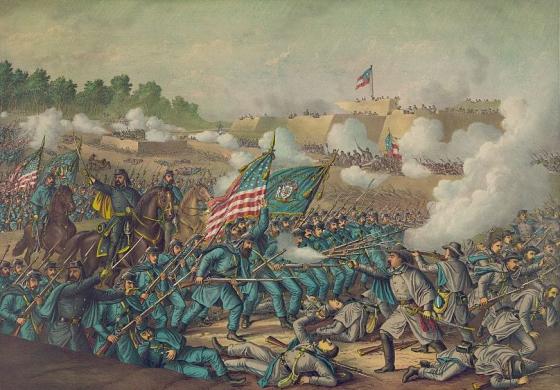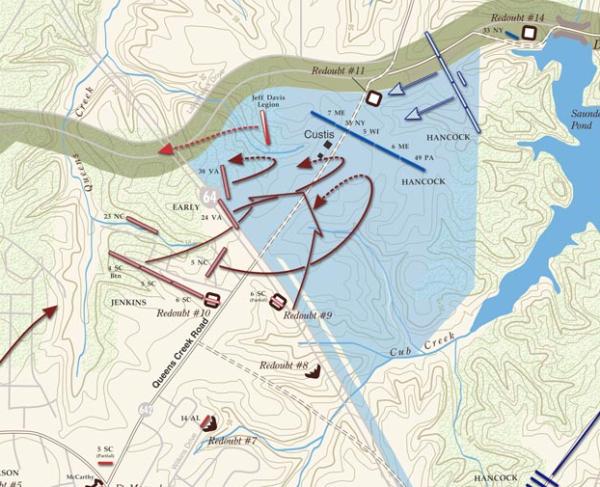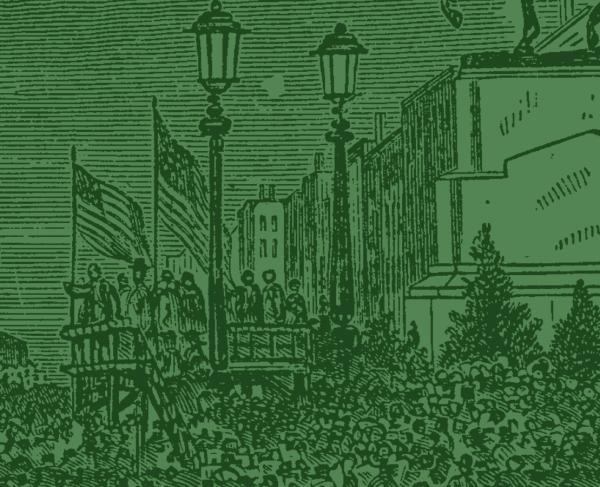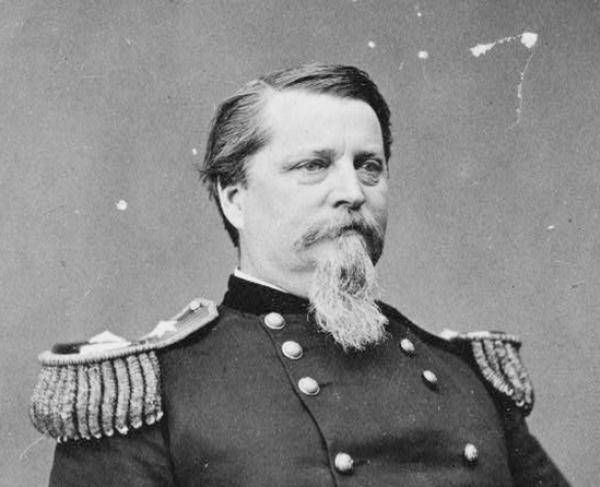'Bloody Ravine,' 29 Acres at the Heart of Williamsburg's Civil War Battlefield, Protected for Posterity
(Williamsburg, Va.) – Although the city is synonymous with the colonial era, Williamsburg’s significance to American history extends well beyond the 18th century. Thanks to a partnership between the American Battlefield Trust and The Colonial Williamsburg Foundation, supported by the National Park Service’s American Battlefield Protection Program and the Commonwealth of Virginia, 29 acres that played a critical role in the Civil War will be protected forever.

“Sometimes the stars align, and that certainly felt like the case with this project,” said American Battlefield Trust President David Duncan. “Zoned for commercial uses and in a sought-after location, the fair-market value of this land was eye-popping. But The Colonial Williamsburg Foundation is a partner that shares our vision for creating places where American history is alive and tangible. Together, we were able to create a scenario, supported by government partners who recognized the extraordinary significance of this land, that will preserve this historic ground forever.”
Acknowledging the Foundation’s important role, Colonial Williamsburg President and CEO Cliff Fleet said, “The story of America is dynamic, and Greater Williamsburg is rich with places that figure prominently in that story. It was our honor to ensure that this historic landscape is safeguarded by an organization uniquely situated to interpret it. The work of the American Battlefield Trust to preserve this important piece of Civil War history adds to the diversity of offerings for visitors interested in a more complete understanding of the Battle of Williamsburg and provides an economic boost to local businesses.”
When the Trust announced the project in May 2020, it emphasized the extraordinary investment that the opportunity represented. Between a donation of value being made on the part of the seller and anticipated grants from the federal and state governments, each dollar donated by Trust members would be matched $220-to-$1. Also notable, the land represented a pristine pocket of battlefield in a highly developed area. It provides an opportunity to honor seven American soldiers who earned the Medal of Honor for their valor at Williamsburg: Cpl. Robert Boody (40th New York), Sgt. Martin Conboy (37th New York), Sgt. John Nicholas Coyne (70th New York), Pvt. Michael Dillon (2nd New Hampshire), Pvt. Thomas Timothy Fallon (37th New York), Sgt. John Haight (72nd New York) and Capt. George Washington Mindil (61st Pennsylvania).
Having a sizable portion of the battlefield protected also offers the opportunity to tell important stories of often overlooked African American involvement in the Civil War. The outcome of the Battle of Williamsburg was greatly influenced when enslaved persons offered the Union army intelligence about unoccupied Confederate fortifications, enabling them to gain a protected foothold on their opponent’s flank. Slave labor had been used to construct these fortifications, and some of the same men who built them clandestinely led soldiers through the woods to exploit them. As the war progressed, enslaved persons in the region pursued self-emancipation by journeying to Fort Monroe, where they might be declared contraband and under Union protection. Subsequently, many Black men from the Williamsburg region enlisted in the United States Colored Troops as the war progressed.

Although the Trust is typically able to generate matches that double or triple the impact of private gifts, the massive multiplication factor drew immediate attention and the Trust swiftly raised the amount necessary to secure the property. With the fundraising completed and state and federal grants awarded this autumn, the transaction was completed this week.
The newly protected land will provide both environmental and economic benefits to the local community, noted Drew Gruber, interim president of the Williamsburg Battlefield Association. “Conservation of this green space will not only ensure the quality of life for regional residents but will help our economy by diversifying our tourism profile. Adding a Civil War amenity will attract that large audience which literally drives past Williamsburg each year in search of these sites and stories.”
The Battle of Williamsburg was fought on May 5, 1862, and marked the largest engagement fought in Virginia up to that time, after First Manassas the previous July. Departing from Fort Monroe, the Union Army moved up the Virginia Peninsula, hoping to threaten Richmond. The two forces had settled into a weeks-long siege at Yorktown, another site more often associated with the Revolutionary War. When the Confederates withdrew from their entrenchments, Union Maj. Gen. George B. McClellan was slow to mount a pursuit but made contact with Confederate Gen. Joseph E. Johnston's rearguard brigades four miles southeast of Williamsburg on the rainy morning of May 5.
One of the key geographic features of the morning fighting came to be known as the “Bloody Ravine,” as the forces occupied opposite sides of the divide and hand-to-hand combat was recorded between the lines. Later in the day, Union Brig. Gen. Joseph Hooker assaulted Fort Magruder, an earthen fortification alongside the Williamsburg Road, but was repulsed. Confederate counterattacks, directed by Maj. Gen. James Longstreet, almost overwhelmed Hooker's men, but reinforcements stabilized the Federal left. It was in this fighting that Brig. Gen. Winfield S. Hancock earned his nickname “Hancock the Superb.”
That evening, Johnston continued his withdrawal up the peninsula. McClellan claimed the battle at Williamsburg was a “brilliant victory” over superior forces, but neither commander had committed his entire army to the fight; nearly 41,000 Federals and 32,000 Confederates slugged it out, inflicting a total of 3,800 casualties on both sides.
The American Battlefield Trust is dedicated to preserving America’s hallowed battlegrounds and educating the public about what happened there and why it matters today. The nonprofit, nonpartisan organization has protected more than 53,000 acres associated with the Revolutionary War, War of 1812, and Civil War. Learn more at www.battlefields.org.
###



